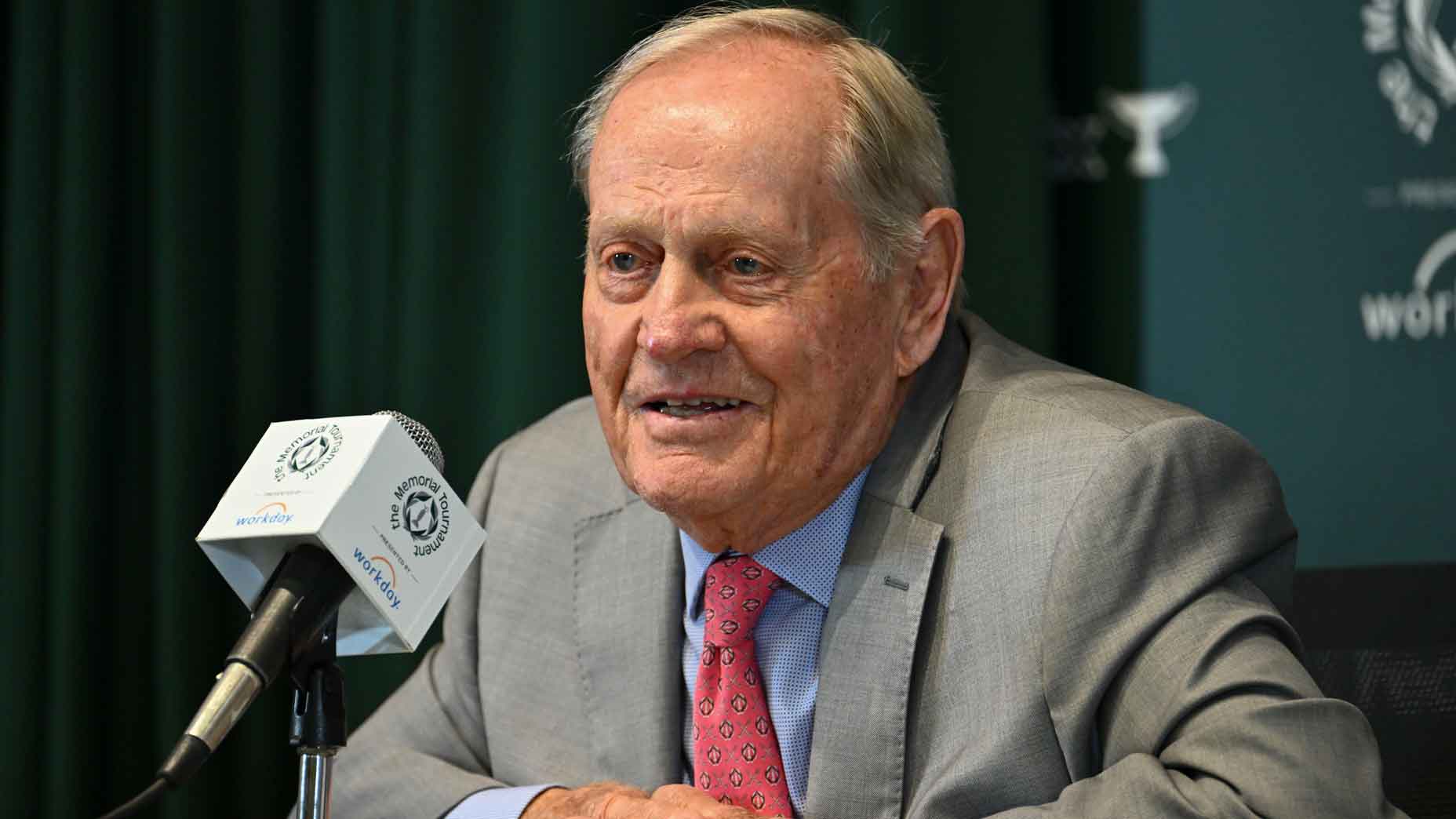During the second round of the Memorial a year ago, Jason Day’s tee shot at Muirfield Village’s watery par-3 16th missed short-right into a greenside bunker.
Day, who is a Muirfield member, was less than pleased with the result.
Less than pleased with something else, too.
“Stupid hole,” he muttered, a zing that was picked up by Golf Channel mics.
As it happened, the course’s famed designer and tournament host, Jack Nicklaus, was in the booth helping to call the action.
“Did he say stupid hole?” Nicklaus said.
The remark hung in the air for a beat before Nicklaus chuckled.
“Can we kill the volume?” announcer Terry Gannon joked.
More laughs.
“No, I think he might be right,” Nicklaus said.
Indeed, Day wasn’t the first player to criticize the 16th. Just earlier that day, Nicklaus had had lunch with Rory McIlroy and Jordan Spieth, and the par-3 was a hot conversation piece.
“Jordan says, what a horrible hole,” Nicklaus recalled during his Friday booth visit last year. “Well, I listen to that. You know, maybe it is a horrible hole. So how am I going to make it better? My whole goal here is to have 18 of the best holes I could have that will be, as I said earlier, firm, fast and fair. Nobody will complain with that. But if it’s not fair and it’s too difficult, then they have a problem. As I say, I listen to that, I react to it, and no golf course is perfect.”
Trouble with 16 was there weren’t enough landing areas: It was too challenging to hold. As Spieth said after his first round last year, “It’s 203 yards adjusted into the wind with a firm green that runs away from you on both sides and has one shelf that you can land it into.”
That resulted in startling low green-in-reg percentages. In the second round last year, of the 118 players in the field, just 30 (or 25.42%) hit the green. The following round wasn’t much easier, when of the 66 players who made the cut, just 28.79% hit the green. Cumulatively for the week, only 32% of tee shots found the putting surface, making it the second-toughest green to hit on the course, which is highly unusual for a par-3.
Nicklaus studied the data, and that, he said this week, is when it hit him. “I’m sitting there and saying, ‘Maybe it’s not shame on them, maybe it’s shame on me.’
“So I set about trying to figure out what would be the best way to change that hole without ruining it, and I came up with — we came up with moving the tees about 30 yards right. Since that no longer was our maintenance area, we could move tees over into that area. It gave us a little bit more of a downwind hole, not so much across the water, but more down the water. I said, ‘Well, you know, that front bunker, a lot of balls could be brought in from there or we can give — I can give ’em the front part of the green.’
Jack Nicklaus’ favorite thing about golf? His answer will warm your heartBy: Jessica Marksbury
“So basically, I’ve given the players the short of the green and the front part of the green, but I left the last two-thirds of the green similar to what it was before — I didn’t change it at all. So, what that means is that now you can go ahead and play a shot and you get the ball into the front part of the green fairly easily, you can probably get it there where you’re going to maybe have a 20-, 30-foot putt for birdie, and that’s okay. I think a lot of fellows would have been quite happy last year to walk off there with 3.
“But if you want to challenge the hole and challenge a pin position back left or back right or middle left, you’re going to probably have to get the ball a little further into the green, and you can leave it short of the pin, take the long putt, that’s fine, or you can challenge it. So I wanted to not give the hole away, but I also wanted to make it so that there really was a bailout.”
The players (thus far!) seem to approve. Xander Schaufelle called the hole “more fair now,” adding that by removing the front-right bunker, players can now be “as defensive as you would like without sort of laying up with like a 50-yard pitch shot. So I think you’re going to see a lot of balls end up in that little area there, especially those front two pins.”
Viktor Hovland said the wider portion of the green is more welcoming from the tee but the large bunker to the right of the green feels deeper to him. “For the back right pin, that’s a very tough bunker shot,” he said.
Collin Morikawa noted that the area which used to house the front-right bunker is now a runoff but “isn’t as drastic as I thought it would be, so you could actually putt it or chip it across the green.” He added: “It’s still a tough tee shot. You’re still hitting 7-iron, 6-iron, 5-iron, depending on the wind, to a small, narrow green that doesn’t have a lot of depth. Even with the movement of the angle, it’s still a tough tee shot. You’re not going to get away with a bad shot out there.”
That much has proven true through the first round and a half this week. On Thursday — with a front-right pin — less than 40% of the 73-player field hit the green. On Friday — with a front-left pin set dangerously close to the water — just 8 of the 37 (21.62%) players who had completed the hole as of this writing had found the putting surface from the tee.
Still, players are getting up and down with more frequency. A year ago, the hole played, on average, 0.364 strokes over par, making it the second-toughest hole. This year, the scoring average is still over par but just barely, at 0.019. Ten holes are playing harder.
Mission accomplished? Let’s give the players a couple of more rounds to mull.











